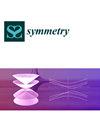高粒度量热计不锈钢吸收板在CMS磁场中的受力计算
IF 2.2
3区 综合性期刊
Q2 MULTIDISCIPLINARY SCIENCES
引用次数: 0
摘要
欧洲核子研究中心(CERN)大型强子对撞机(LHC)上的通用紧凑型μ子螺线管(CMS)探测器包含一个强子量热计,用于记录LHC中质子-质子碰撞产生的带电强子和中性强子的能量,质心能量为13.6 TeV。该量热计位于直径6 m、长12.5 m的超导螺线管内,产生3.8 t的中心磁通密度。为了在高亮度LHC的高堆高辐射环境中实现最佳工作,现有的CMS端帽量热计将被替换为一个新的高粒度量热计(HGCal),在两个端帽各有一个电磁段和一个强子段。HGCal的强子部分将包括44块相对渗透率远低于1.05的不锈钢吸收板。每个端盖22块板所占体积约为21 m3。作用在吸振板上的轴向电磁力的计算是设计吸振板机械结构的关键因素。建立了CMS磁体的三维计算机模型,计算了各吸收体板上的轴向力,并给出了力与中心磁通密度值的关系。讨论了计算方法和计算结果。本文章由计算机程序翻译,如有差异,请以英文原文为准。
Calculation of Forces to the High Granularity Calorimeter Stainless Steel Absorber Plates in the CMS Magnetic Field
The general-purpose Compact Muon Solenoid (CMS) detector at the Large Hadron Collider (LHC) at CERN incorporates a hadronic calorimeter to register the energies of the charged and neutral hadrons produced in proton–proton collisions at the LHC at a center-of-mass energy of 13.6 TeV. This calorimeter is located inside a superconducting solenoid that is 6 m in diameter and 12.5 m in length, generating a central magnetic flux density of 3.8 T. For operating optimally in the high pileup and high radiation environment of the High-Luminosity LHC, the existing CMS endcap calorimeters will be replaced with a new high granularity calorimeter (HGCal) with an electromagnetic section and a hadronic section in each of the two endcaps. The hadronic section of the HGCal will include 44 stainless-steel absorber plates with a relative permeability value well below 1.05. The volume occupied by 22 plates in each endcap is about 21 m3. The calculation of the axial electromagnetic forces acting on the absorber plates is a crucial element in designing the mechanical construction of the device. With a three-dimensional computer model of the CMS magnet, the axial forces on each absorber plate were calculated, and the dependence of forces on the central magnetic flux density value is presented. The method of calculation and the obtained results are discussed.
求助全文
通过发布文献求助,成功后即可免费获取论文全文。
去求助
来源期刊

Symmetry-Basel
MULTIDISCIPLINARY SCIENCES-
CiteScore
5.40
自引率
11.10%
发文量
2276
审稿时长
14.88 days
期刊介绍:
Symmetry (ISSN 2073-8994), an international and interdisciplinary scientific journal, publishes reviews, regular research papers and short notes. Our aim is to encourage scientists to publish their experimental and theoretical research in as much detail as possible. There is no restriction on the length of the papers. Full experimental and/or methodical details must be provided, so that results can be reproduced.
 求助内容:
求助内容: 应助结果提醒方式:
应助结果提醒方式:


